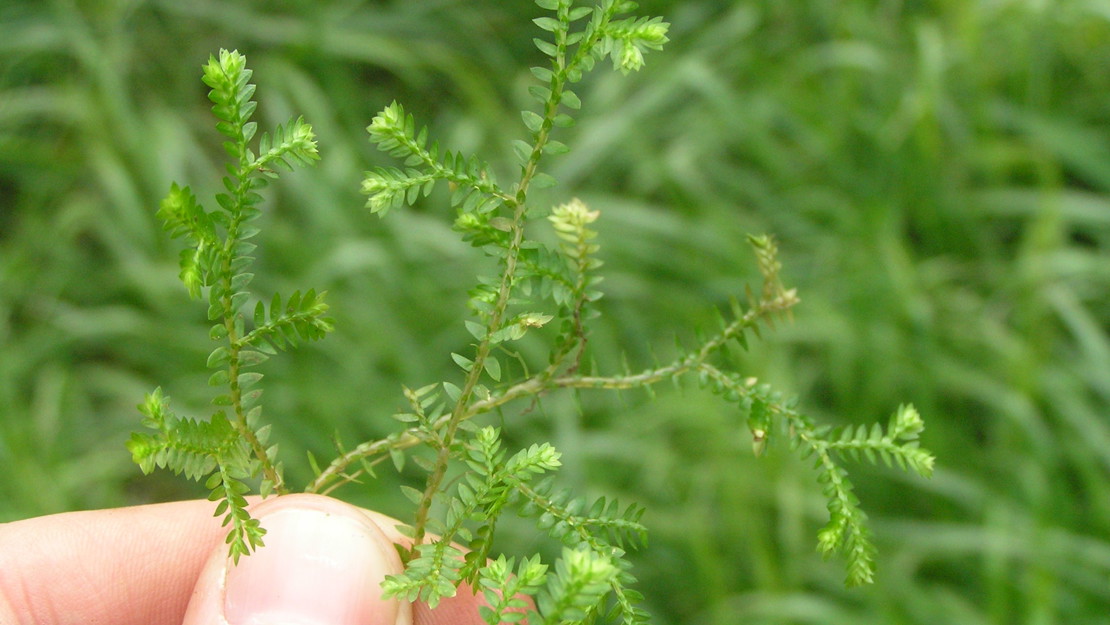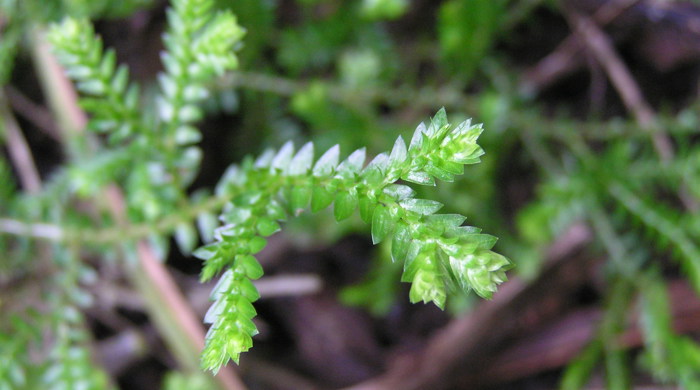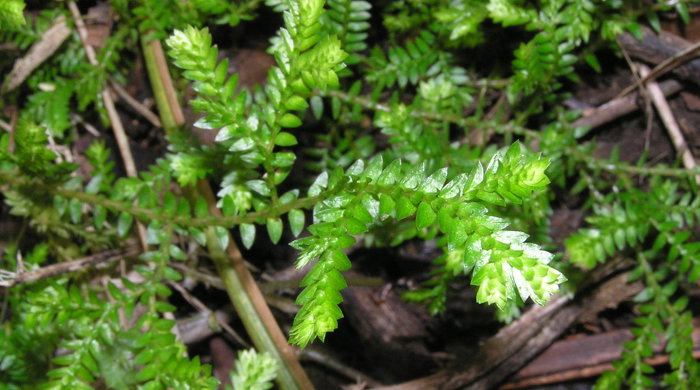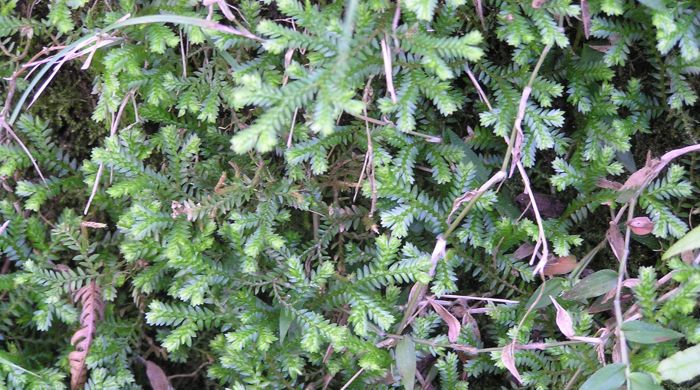Selaginella kraussiana
African club moss
Family: Selaginellaceae
Origin: Africa

Regional Pest Management Plan (RPMP) status
- National Pest Plant Accord Species
- Whole region — Sustained control
General description
Prostrate fern ally. Stems are irregularly branched and root at nodes. Aerial roots are long and fine. Leaves are small and arranged in rows. Cones are rounded.
What you need to know
To help protect our environment:
- You must not breed, distribute, release or sell African club moss. As African club moss is a National Pest Plant Accord species, these restrictions apply within the Auckland region and across the whole of New Zealand.
- You must not plant African club moss within the Auckland region, unless you are transferring an existing plant on your land to another location within the boundaries of the same property.
- You must destroy any African club moss on land that you occupy if it has been planted in breach of the above rules and you are directed to do so by an authorised person.
Habitats
Damp situations; forest, riparian areas, gardens, nurseries, hothouses.
Dispersal
Produces spores, vegetative spread from stem fragments. Spores and stem fragments dispersed by animals and soil and water movement. Human-mediated dispersal through dumping of garden waste and contamination of footwear and machinery.
Impact on environment
Forms dense mats, excluding native ground cover and preventing native seedling establishment. Alters native invertebrate habitat. May facilitate establishment of other pest plants.
Control
Site Management
Follow up treated areas 3 times per year. Encourage natural regeneration of native plants or replant treated areas where possible after 2-3 treatments to establish dense ground cover and minimise reinvasion.
Recommended approaches
Physical control
Method: Pull out or cover with black plastic or weedmat for 3 to 6 months.
Plant parts requiring disposal: All parts.
Disposal options: Landfill.
Biocontrol
Currently not available for this species.
Community agrichemical control recommendations
For small infestations: Foliar spray with 10ml glyphosate green per 1L of water.
For medium to large infestations:
Basic Growsafe certified: Foliar spray with 100ml glyphosate green per 10L of water.
Certified Handler/Experienced agrichemical user: Foliar spray with 100ml glyphosate green and 2g metsulfuron-methyl per 10L of water and 20ml penetrant.
Caution: When using any herbicide or pesticide please read the label thoroughly to ensure that all instructions and safety requirements are followed.






